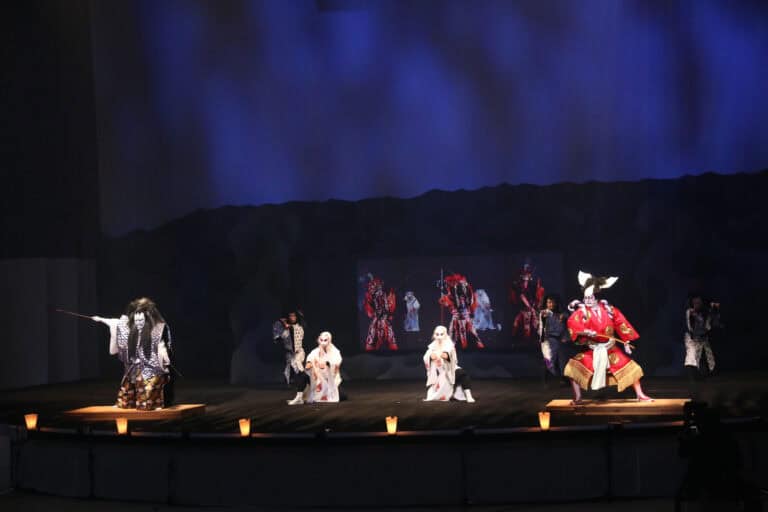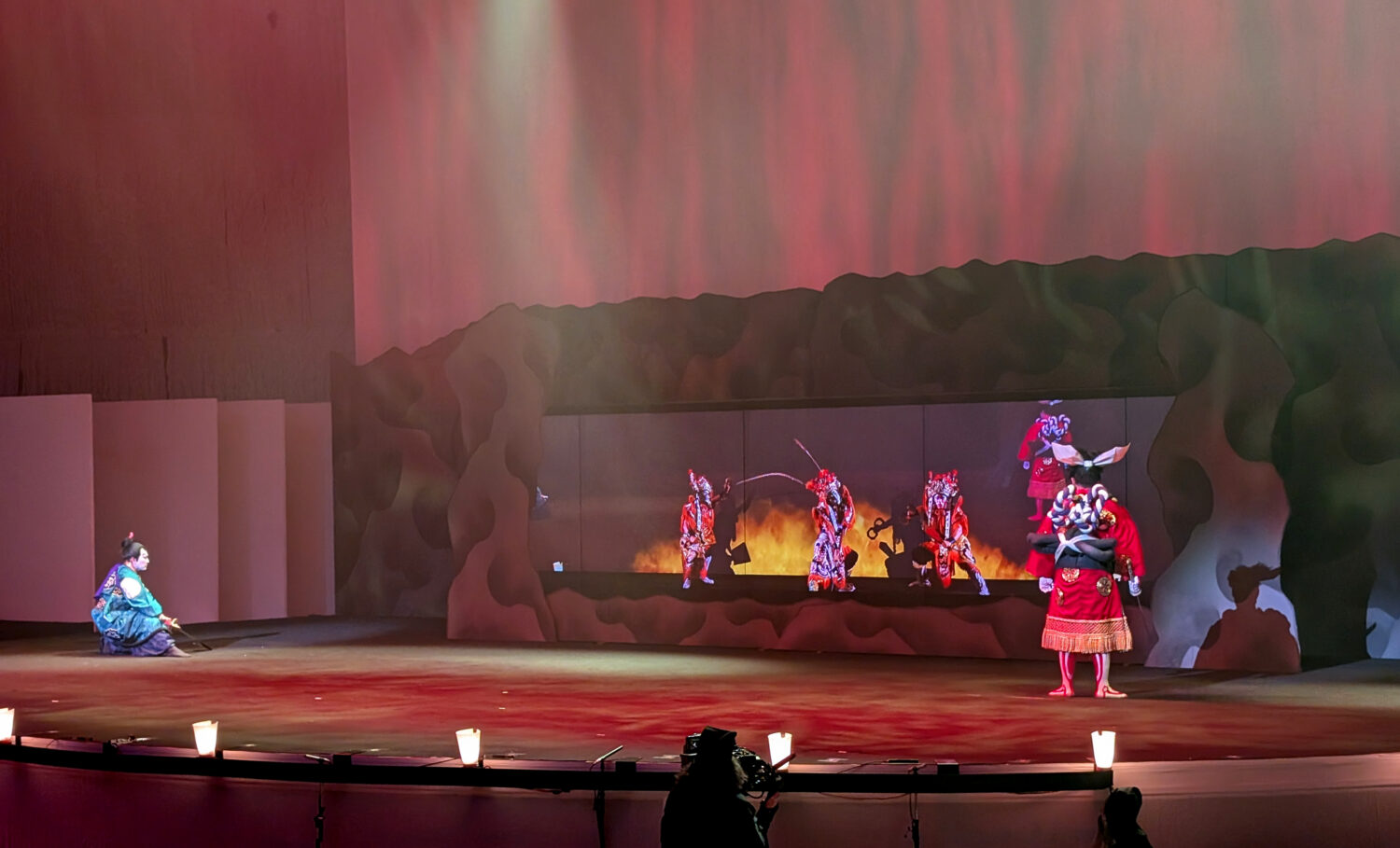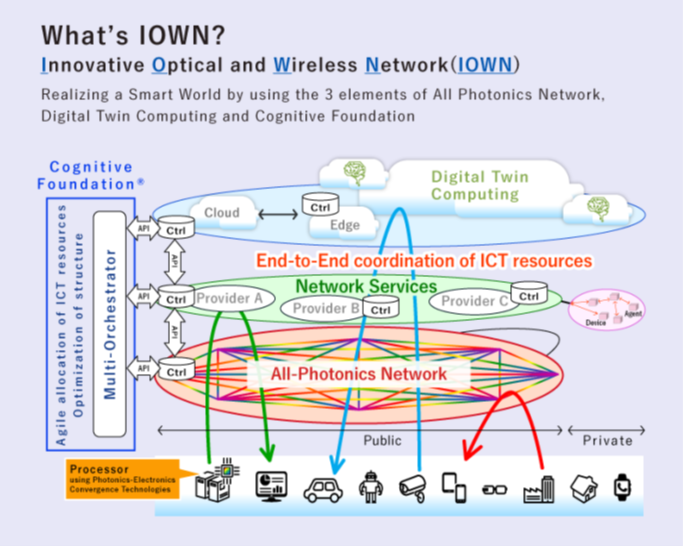Photonics is attracting a lot of attention from technology companies. This is not surprising, because if it is possible to transfer all data via optical connections, thereby eliminating the need for conversions between optical and electronic signals, there are huge gains to be made. NTT invited us to see the impact of the Innovative Optical and Wireless Network All-Photonics Network (IOWN APN) with our own eyes at the Osaka Expo in Japan.
The demonstration at the Osaka Expo consisted of a live Kabuki performance. Actors on stage in Osaka took part, as well as actors in Taipei, Taiwan. Kabuki is a traditional Japanese theater show in which beautifully dressed and painted actors act out a story using a specific style of acting. We are not theater critics, but we thought it looked very good.
The link with NTT is, of course, not so much in the performance of the actors, but in the performance of the underlying network. This version of Kabuki is called CHO KABUKI. According to our information, CHO can be translated as ‘Super’. This is because we are not talking about a performance on the stage of the Osaka Expo alone. It also takes place on a stage in Taipei, Taiwan, more than 1,700 kilometers away. The whole thing is a collaboration between NTT from Japan and Chunghwa Telecom in Taiwan.
What makes this joint performance special is that it takes place simultaneously. In addition, there are scenes in which the actors also interact. This means that the actors perform a scene together in real time. Three Taiwanese generals help the protagonist on stage in Osaka. They help defeat the villain in the performance in an elaborate fight scene.
For lovers of Japanese culture, the princess (there always has to be a princess, of course) in the story is played by Hatsune Miku, who is hugely popular in Japan (and beyond). She is a Vocaloid who fills entire concert halls as a hologram. It just goes to show how much effort NTT and Chunghwa Telecom have put into this.
IOWN APN as backbone
Of course, we weren’t primarily there as art critics. We were mainly interested in the underlying technology. To be able to realize such a performance in real time, the connection between the two locations must be as fast as possible. That’s where IOWN APN comes in. According to NTT, the show uses the first international IOWN APN network ever.
Basically, the purpose of an All-Photonics Network is quite clear. It is to eliminate electronic connections in the network and replace them with optical connections. This is because the conversion between optical and electrical (and vice versa) has a significant impact on the performance of the network as a whole. The goal of an All-Photonics Network is to reduce energy consumption by a factor of 100. In addition, it aims to increase capacity (bandwidth) by a factor of 125 and reduce latency by a factor of 200 compared to conventional systems. We recently mentioned some of these things in an interview with Chris Wright, CTO of Red Hat.
It may be worth mentioning that the IOWN Initiative is not just about connections via fiber optic cables. The name clearly includes the word “wireless.” There is also a component involving Low-Earth Orbit satellites and everything that goes with them. To achieve this, the intention is to switch from standard radio waves to lasers.
Multiple phases of IOWN APN
IOWN APN will not happen overnight, of course. During our visit to Osaka Expo, NTT CEO Akira Shimada told us that the company has been working on it since 2016. The entire process consists of several steps towards Photonics-Electronics Convergence (PEC) devices.
The existing fiber optics between data centers are already suitable for this, of course. But in phase 1 of the process, work was done on the pluggables at the end of those fiber optic cables. That step has now been completed.
The second step has also been taken. This involves PEC for connections between boards that need to be installed within the equipment. The third step should also enable photonic connections between chips on the boards. The final step is to be able to establish die-to-die photonic connections within chips.
NTT cannot do it alone
The above steps go from (relatively) simple to extremely complex. During our visit, we saw a slide indicating 2032 as the year in which PEC-4, as NTT calls it, must be realized.
2032 as the target year for IOWN APN is quite ambitious. There is still a lot to be done. NTT cannot do this all on its own, if only because it is not active in all parts of the process. Fortunately, NTT is not the only player involved in photonics. This became clear when it set up the IOWN Global Forum in 2020 together with Sony and Intel. Since then, it has attracted more than 150 members.
How does the IOWN APN perform during operation?
The IOWN APN performed quite impressively during the demonstration we saw. There was definitely a visible latency between the two environments. Considering that we are only halfway through development, this is quite logical. However, the latency was not so great that it disrupted the choreography. That in itself is quite impressive, given the distance of over 1,700 kilometers.
Completely eliminating latency is difficult from a physics standpoint (to say the least). Light has to travel a certain distance, and that will always take a certain amount of time to get somewhere else. Whether or not you experience latency therefore also depends on the distance that data has to travel. However, with the speed of light being just under 300 million meters per second, there is still quite a lot to be gained. Especially when you consider how big (or small) the Earth is. In addition, our eyes do not perceive latency below a certain threshold. So there are definitely possibilities.
IOWN is about more than APN
We will soon be taking a closer look at IOWN. We will then write a more detailed article about how it all works. For now, it is important to note that APN is only one of the three components that the IOWN Global Forum focuses on. It also wants to develop advanced Digital Twin Computing capabilities and set up a Cognitive Foundation. With this, it wants to unlock the full potential of AI, robotics, and IoT. We will also come back to this in due course.
Below is a (somewhat chaotic) schematic representation of what IOWN Global Forum and the IOWN Initiative intend to achieve. It shows the three components and examples of how they can be linked together.
Opening photo credit: NTT


